Up Close and Personal with Painter Alexander Yulish
Going to the studio is like going to war, but it’s a war you really want to win.
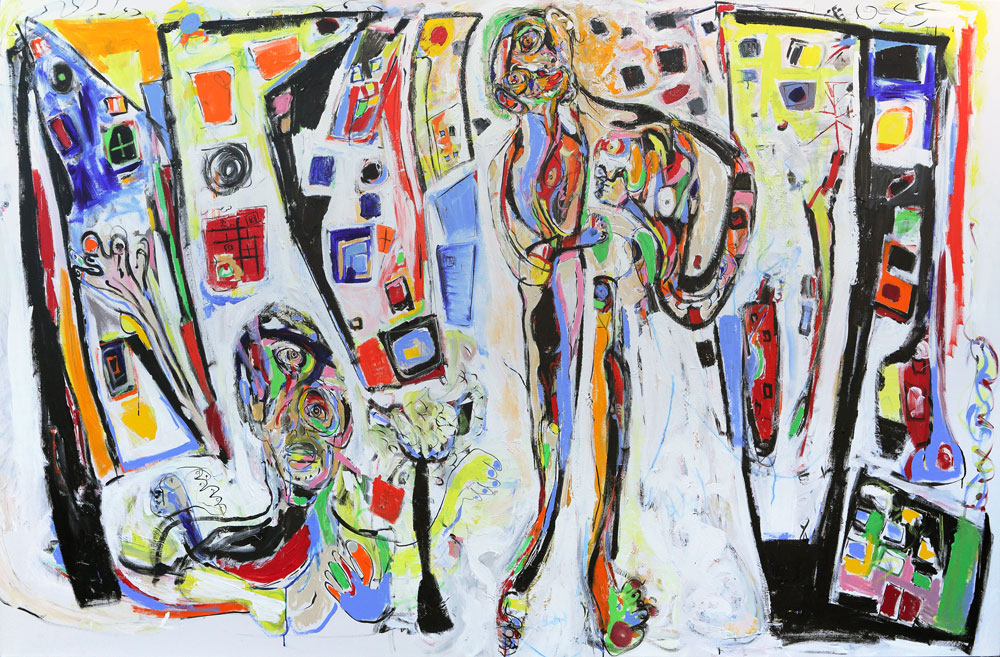
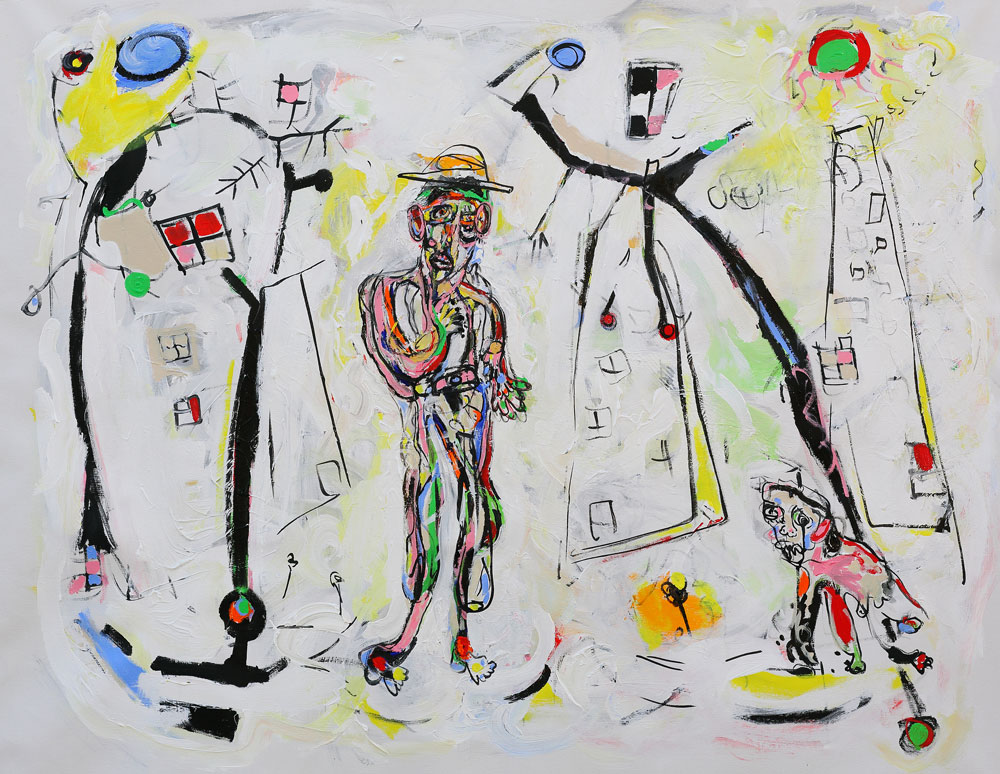
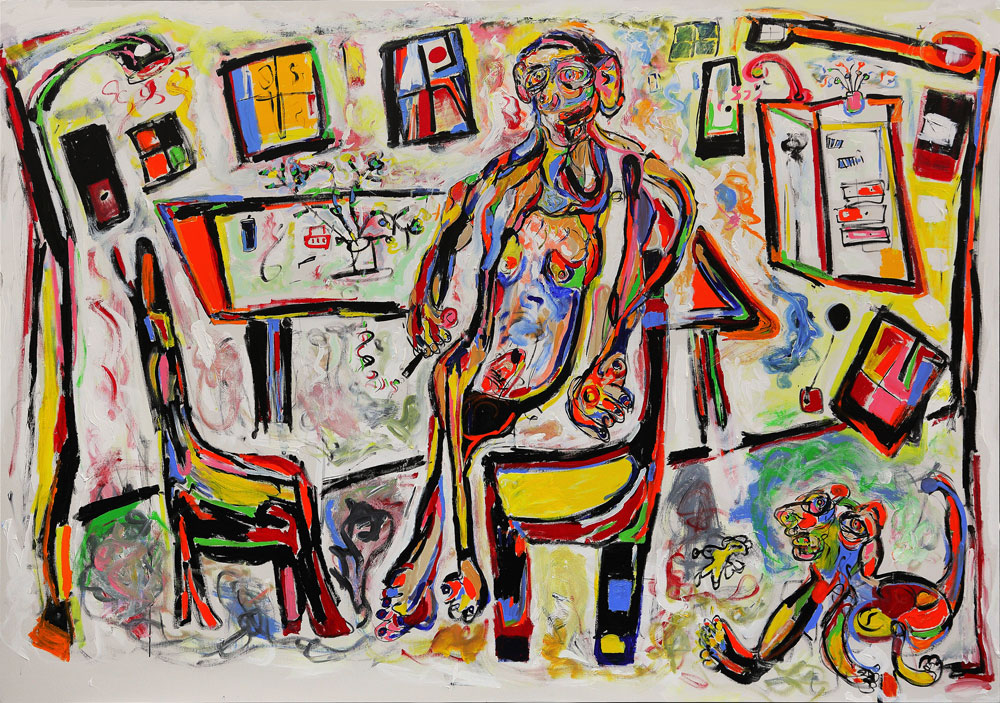
Alexander Yulish is many things: an actor, a model, a native New Yorker, an Angeleno, and a student of everything life has to offer. But first and foremost, he is an artist. The son of a famed illustrator and sculptor, art has always been in his blood.
You can check out his oeuvre online here. Looking at the website, I was blown away by the immediacy, the raw energy of his palette and lines and I couldn’t wait to visit the gallery. In person, the paintings are even more visually stunning, at once playful and brutal, gripping, anarchic, intuitive; some are emotional to the point of being soul-crushing. I mean that in a good way- the kind of aesthetic soul-crushing that reminds you of something inside yourself, or teaches you something you didn’t know, the kind that taps into a primal part of the human spirit, the chthonic, sub-material that resides in the depths.
I sat down with Alexander in KM Fine Arts Gallery in Hollywood to hear about his new show˜Unquiet Mind and find out more about the intriguing and charming man behind all the semi-myths I read on the internet.
Deena : So, I stalked you online a bit before coming up with these questions. Your background seems really interesting, you grew up in New York, correct?
Alexi: Yes, I grew up in Manhattan. I grew up on MacDougal and 8th. And then I grew up in Chelsea.
D: I read that you grew up in the Chelsea Hotel, did you live there?
A: No, I grew up right next to the Chelsea but people always write that I lived there because it sounds more romantic! But yeah, I was around people like Patti Smith and that whole group on multiple occasions, so it was definitely exciting growing up there. This was before the neighborhood changed drastically; it was still Chelsea.
D: Your mother, Barbara Pearlman, is an artist as well? She hasn’t shown her work for almost 30 years. To what extent was your art influenced by her?
A: She was a famous illustrator for Vogue, and she travelled all over the world for her career. Then she got into fine art and that was her next progression. At one point her illustration career was skyrocketing and she just quit. She came back from a show in Germany that she had sold out and she just quit. She said this isn’t what I want to do right now, not in the sense of quitting art, but she only wanted to paint. She didn’t want to deal with the business part of art anymore, she wanted to make things really beautiful and pure. We had a studio in the back of our house so she would go and paint there; later she got into sculpture.
Recently she has come out of hiding. We’re going to have a show together, actually. We don’t know when or where, but a lot of people want us to have a show together and we are planning it, so that will be a great extension.
If you go to Pearlman Art you’ll get an idea of the environment I grew up in.
D: Was it during your formative years then, that she decided to just pursue painting, and do all this art for herself?
A: Yes, it was when I was around 6 years old.
D: So you grew up with the impression that art is for self-expression, it’s not something you do in a commercial sense, in order to sell things for profit? Art for art’s sake, if you will.
A: Exactly. As a kid I would spend hours literally just watching her paint. She taught me everything from drawing to color, but in a sense you can’t really teach someone to be an artist. I feel like it was in my blood. Part of it I think is genetic, it’s just in you. And the other part is putting in the work, so she taught me the craft.
D: Did she instruct you at all? Teach you color theory and give you advice?
A: To a degree. When we used to draw together what she would tell me is just commit to the first line, whatever it is. Put your heart into that first line. And then the second line, then the third line.
Really, there is no such thing as a painting, it’s just a bunch of lines. But at the end, if you’re lucky, you might get a painting and that’s great. Sometimes when I don’t commit to something I’ll throw it out, because I’ll realize that although I technically see a painting at the end, my heart isn’t in it. The paintings in this show, Unquiet Mind, I feel my heart is in it. The rest, that I didn’t put my heart in, they were hung in the garbage. So maybe some homeless person is using it for a blanket.
D: Were you exposed to a lot of art growing up that influenced you? When I look at your work I see a lot of de Kooning, maybe early Picasso..
A: You know, I get Bacon, de Kooning, Chagall, but when I look at myself I really don’t see any of that. I can understand the similarities in composition or in color combination and I take it as a compliment. But my favorite compliment I guess would be when you see an Alexi you just know it’s my work. It’snot self-conscious, though. People will go on and on about what they think inspires me. But I don’t even go to museums that much because I don’t want to be influenced. Things like memories influence me, like this conversation, maybe this will end up in one of my paintings.
D: Besides memories, what other types of things inspire you outside of the world of fine art?
A: Everything. Gravel. Trees. People. Cities. I don’t think there’s anything that at the end of the day doesn’t inspire me. You have all these experiences every day and it just starts to seep into your bones. If you take a shower some of it wipes off but most of it’s stuck in you.
It’s really hard for me to talk about my paintings because essentially they’re just conversations and the conversation shifts.
D: Speaking of being inspired by cities and the environment you’re in, you moved from New York City to Los Angeles. Did that change in atmosphere affect your creative output in any significant way?
A: I moved here because I had already done New York. At the age of 25 I thought, Okay, I grew up here, I was going out when I was 13 years old. So you experience those things, then all of the sudden you want to experience something new. And I did. And I hated it here for the first 2 years, but then I stopped comparing. Once you stop comparing you can actually appreciate LA for what it is. I made peace with it and I fell madly in love with this city.
Plus, I have room to work here! In New York it would be almost impossible to have that much studio space.
D: So you can work on a larger scale than you would in Manhattan.
A: This show is a little bigger than the last show; I just feel like I had a lot to say and it came out. Emperor of New York was similar but different. They all have the same conversations but they’re different.
I don’t even know how to name my paintings. I have friends name them sometimes, just because it’s like the experience we’re having here and talking. Imagine you had to name this conversation…it would be the strangest thing, what would we call this?
D: It would be hard because there are so many subjects, there’s just a lot of content there and so many things going on.
A: Yeah, so that’s like when I finish a painting, how do I possibly name it? Sometimes some of them can be more figurative, like this one I called The Empty Chair”because to start there actually was an empty chair, although later I switched it, but that one was a little easier.
It’s messed up because you can have a painting with a really cool name that isn’t that good and vice versa. Or the name can influence you; for instance, a painting might be called “Sunrise on the Moon” or something, but if you named it instead “Battlefield” that’s what people would see and take away from the painting when they looked at it. Subconsciously it’s amazing what naming does for a piece. I don’t want to name anything “Untitled #5 ” or “Series 2,”or “Man Walking Down Stairs Holding a Staple Gun” I just don’t do that.
 D: Have you ever tried to work backwards, come up with a name first and then paint based on that? Like a writing prompt.
A: No, I haven’t done that! It’s a cool concept though. Sometimes I give myself scenarios, such as, Today, I’m going to do a black and white piece. Giving yourself restraints like that can be fun.
Going to the studio is like going to war, but it’s a war you really want to win. You risk everything knowing that you can lose, even at the last moment. Sometimes I get to the end and I’ll be like okay I got it, this is almost done and then all of the sudden at the last minute, you end up doing something at the bottom of the canvas that just doesn’t work.
Everything’s a puzzle. If I do this blue line at the bottom it has to balance with something else. It’s like ping pong. So you can lose a painting at any moment. And that’s what I love at the same time, it’s unpredictable. And that unpredictability is what makes me want to paint. If it isn’t a bit unpredictable or dangerous I don’t get interested. Some people think because I use so many colors there’s a really happy energy, look a little deeper. It’s a dance. A lot of these paintings change every time I see them.
D: This kind of malleability and flux, is that something you are hoping people take away from your art?
A: That’s what I would like people to experience, to see something different every time.
At the end of the day, you have to paint for yourself and you just hope it translates. I feel lucky people are buying my stuff and getting inspired and the show is doing well, but at the same time, if it didn’t, I still would have to paint. Even though there’s nothing really romantic about doing something that people don’t appreciate.
D: Art is inherently subjective.
A: Yes, there are certain things people like. I saw someone just get pounded in their stomach when they saw this particular painting (Closer) and then the next person walked by without barely glancing at it. You’ll overhear people; sometimes they get excited and sometimes they’re saying they don’t really like it.
But you can’t let that affect you personally, the business part of it. The business part is so important and that’s the scary part because I just love painting and want that to be separate. I think the idea of identity is just the weirdest thing, having to say “Im a writer or I’m a painter. What does that even mean? It’s so limiting.
D: You want to do what you love but you also want to make enough money from it that you can continue to do what you want so you don’t t spend your day at a soul-sucking job that leaves you with no free time to pursue your passions.
A: Oh god, yeah. I’ve done the weirdest jobs.
D: What’s the weirdest job you’ve had?
A: I’ve been a food delivery man in New York City, that was a really strange one. I had to ride a bicycle and bring food from this place called Live Bait and I would go to the weirdest homes and people would invite me up. I would literally just sit there and talk to people while their food got cold. Or sometimes I would crash the bike, spill everything and I’d have to reassemble their food.
When I first came to LA I worked for this reality TV show called “Change of Heart” and the premise was I had to find people and then these couples go on a date with the other people and then have to decide if they still want to be with their significant other. So I literally would go up to people and ask if they wanted to make $500 to be on this show but technically I would break couples up. People would call me afterwards and yell at me, saying Why did you put me on this show? You made me look like an idiot! So that was one of the strangest, really, really odd.
But yeah, I’ve done everything. When I got out of school I started modeling and I went to Europe and I didn’t like it at all. I lived in Milan for a while and it was so strange but I would do it all again, I just love experiences. And I like watching people. I get really curious about people. I need people. Just as much as I need to be alone. If you’re a painter you spend a tremendous amount of time alone, it’s very introverted. But at the same time when you’re alone there’s only so much you can learn. It’s so good to actually talk to someone.
D: You get to bounce ideas off of people?
A: Yeah, and get excited! There’s nothing too romantic about being tormented in your home. Wearing sunglasses and telling no one to come see you or look in your eyes. Having your assistant say “Only speak to Alexander Yulish when spoken to,” or something like that. I mean we’re all eccentric in our way but there has to be a balance.
D: Speaking of the artistic process, I read you have a place in Mexico? Is that where you go now to paint?
A: I’m starting to. My mom and I are moving to San Miguel, and we found the perfect place but it ended up getting bought literally right before we made the offer. It was our dream home, with these huge studios. We ended up finding a place further away.
D: San Miguel, that whole area is a big expat artist community.
A: It is! But it’s weird, I don’t like hanging out with other artists that much. I wish it was the time of Picasso and Modigliani, and that whole crew back in the 20’s; they all bounced ideas of one another and they all critiqued and it’s just not like that anymore. Everyone always says they want to create that kind of a space again, they want to re-create Warhol’s factory, but no one’s ever going to recreate that.
D: Growing up in NYC during that time must have been interesting. Warhol was still alive then. And you got to experience the height of graffiti before they really cracked down and stopped running the trains with tags on them. Did you ever do street art?
A: Oh yeah, we would tag any place we could.
D: What’s the coolest place you tagged?
A: On a church. Just kidding! That would’ve been really bad. We would literally just dare each other, we would tag the sides of police stations, I’ve gotten chased. We used to get in bad fights, cross out the wrong person and they’d know you! It was a little more innocent, people didn’t just shoot you, I mean down town but that wasn’t my personal form of expression, there were people who were complete masters, geniuses. Street art is a very strange thing right now. It was the height and now there’s a group of street artists who will go down as unbelievable.
Everyone likes street art right now but not everyone’ s a street artist. There’s a difference. Some of them are going to be in permanent collections of the biggest museums in the world and will be appreciated. Someone will do a throw up and it’s not nearly as profound but sometimes you just see something and you can’t even express it, it’s just insane. Sorry, sometimes I have trouble with words. Saying something is insane doesn’t really describe it.
D: I know what you mean, I say awesome all the time when I really like something, and I don’t know why those words even comes out my mouth because things are always so much more nuanced than that and we have this whole rich vocabulary at our disposal.
A: Exactly, because at the same time a color will express it, like Blue or Ultramarine Blue, that’s like how I feel and then other times, that’s not how I feel. I have to create a whole new blue. But then you realize you can never create a blue, everything’s been invented.
D: Well, Yves Klein made his own blue and he patented it.
A: Oh, you’re right, that was a bad example with the blue, now you’re like ‘You’re an idiot, Alexi you need to do your art history!’ Ha, I hate art school.
D: You mean when you went to college?
A: Yeah, I just hated it. My mom was my real art school. And that was essentially years and years just watching her and experiencing that. But in school I hated my art teacher. I remember once I had to render a chair and when I was done I decided to elongate everything because that’s how I felt. But my professor was upset because it wasn’t what he instructed us to do. It was a constant battle.
At the end I remember I said to him I’m an artist and he said, ‘That’ a pretty bold statement. People spend their whole lives before they can call themselves an artist’. And I looked at him and I said, ‘Well, that’s their fucking problem.’ And he just looked at me, and that was that. It was bad so I quit. It was just such an awful experience.
D: Because it was limiting? You didn’t have full freedom of expression?
A: Basically. I could render something if I wanted to, exactly life-like. But at the same time, I remember drawing with my mom and she taught me to just extend a line until it emotionally stops being relevant to you. When the emotion stops the line stops, so a chair or an arm may go out all the way across the canvas and then all of the sudden it ends.
But there has to be a dialogue, you can’t just take it all the way out for no reason. So you may do that but other things have to balance.
In a sense, there are no rules. You create your own rules. There’s an alphabet, just like if you were to write a book, you would have to use an alphabet. Here, the alphabet is colors. Sometime the colors may not be enough so you grab a branch off the ground and stick it through the canvas. That may not be enough, so you start using everything around you. Some people use cement bricks, and they build a brick wall in the middle of a gallery. That works emotionally for some people. For me it doesn’t. But everyone has their own form of expression.
D: Speaking of forms of expression, you’re an actor as well. You were in a David Lynch movie?
A: Yeah I was, it was such an interesting experience. I wanted to meet him, so I did and it was at the end of his movie “Inland Empire” and I remember getting a phone call the next day asking if I wanted to be in the film. They just told me to show up on set. It was towards the end of filming and it was a fun experience. I love acting but it’s not something I share that much. Sometimes people want to know the story; yes, I did acting and I did a lot of things, then they’re like ‘Oh, you came to painting later in life,’ but, no, I didn’t. I’ve been painting my whole life. I just decided to focus on it, and I got really fortunate. It’s funny, acting doesn’t do it for me the way painting does.
D: Because you’re following someone else’s script?
A: Yeah, I don’t like people directing me how to do things. The only thing I have to worry about now is the guy who created these colors and put them in a tube.
D: Well, hopefully that guy knows what he’s doing! You’ve mainly done acrylics so far?
A: Yeah acrylics have gotten just unbelievable, they’re very different from oil in a sense but at the same time it’s very immediate, and that’s what I love about it, the immediacy of it.
D: Do you always use a really bold palate?
A: Sometimes. Sometimes I won’t use them, and I’ll only use a blue. Or a black. I don’t paint for the sake of using a lot of colors. I use colors because that’s how I express what’s going on. But everything changes. I’m curious to see where I go in the next 3 years, 4 years. Every show is different not for the sake of being different but because the vocabulary, the language changes.
D: I read something about someone seeing your cellphone background and that’s how you got discovered?
A: I was at the Chateau and I had just gotten my first show here but I was sitting and this guy who is a friend of a friend sitting at our table saw my phone background and he asked who did the painting. It turns out he collects art, so to make a long story short, so he bought a bunch of my stuff and told the Annenberg family about me, then they contacted Leila Heller at her gallery in NYC. There was a show called “The Young Collectors Exhibition,” and that went really well so I started having bigger collectors. I was just fortunate but I worked very hard. Really there’s no correlation between working hard and doing well on the business side, a lot of that’s just circumstance. You just have to be in the right place at the right time. And the work has to be good.
D: Your paintings are abstract, but they do have recognizable things in them, such as a chair, or a vase, or a body. When you make the first line, that line you commit to, do you have any foresight that eventually, it’s going to become a human, or a lamp, or whatever?
A: Not really. I commit to a shape whatever it is. Then I’ll start to disintegrate the shape. Like this one painting, the shoulders were out to here. And it felt right, but then you realize it’s not balanced. At least for me. Sometimes it works when you have huge proportions. This one all of the sudden started getting very compact and very it felt like everything started to get squeezed in.
D: So you painted over the shoulders?
A: Yeah and it was just constant, you know a chair, this chair turned out to be a long couch. And then it felt…it could be anything, it was actually a drink when I finished it. But sometimes it’s not that figurative. There was a desk I think, which I completely erased. It just constantly changes.
This one was called “Family” and now it’s “Alone Together”like how you can be surrounded by people and be very much alone. It’s very much about being in the city. I had just gotten back from NYC and this kind of came out from it.
D: I’m really glad I can ask you these questions in person and we can point to the individual and paintings and talk about them. Because I had this whole list of questions, but it changes when I meet you, and when we are actually looking at the paintings as a point of reference. This sounds odd to say as someone who writes about art for a living, but what do we talk about when we talk about art?
There’s a Gerhard Richter documentary on Netflix and at some point, I’m paraphrasing here, but he says something like “To talk about painting is not only ridiculous but beside the point.” Painting is another form of thinking. Words are only capable of expressing words and painting has nothing to do with that. And I just thought that was so beautiful.
A: Wow, yeah! You completely get it. Painting is another form of thinking. I completely agree with that, I didn’t say it as well as that, I’m not good at speaking and that’s why I paint. It’s difficult and pointless too because our conversations are completely different. It’s also that, to me, painting is another form of thinking that can be very ethereal. I think it’s another form of expression. When words aren’t enough I paint.
When I was little the New York City Ballet was always a thing because my mom was very much into that scene. I would meet all these set designers, all the greats. So you’re around all of that and it just inspires you. In everything, textures, I’m very visceral.
The texture of gravel, you mentioned that earlier.
I changed my mind about gravel. It’s concrete, I go to New York and I just go touch the concrete, I touch everything.
Well, there you have it. Alexi Yulish is a truly incredible individual and a talented visionary; you should check out his work in person if at all possible. He may be touching concrete in a city near you! If not check out his gallery online. alexanderyulishart.com/


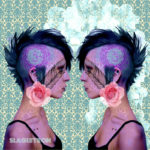
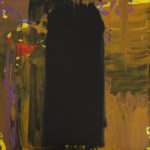
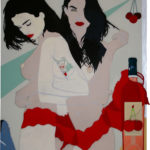
LEAVE YOUR COMMENT